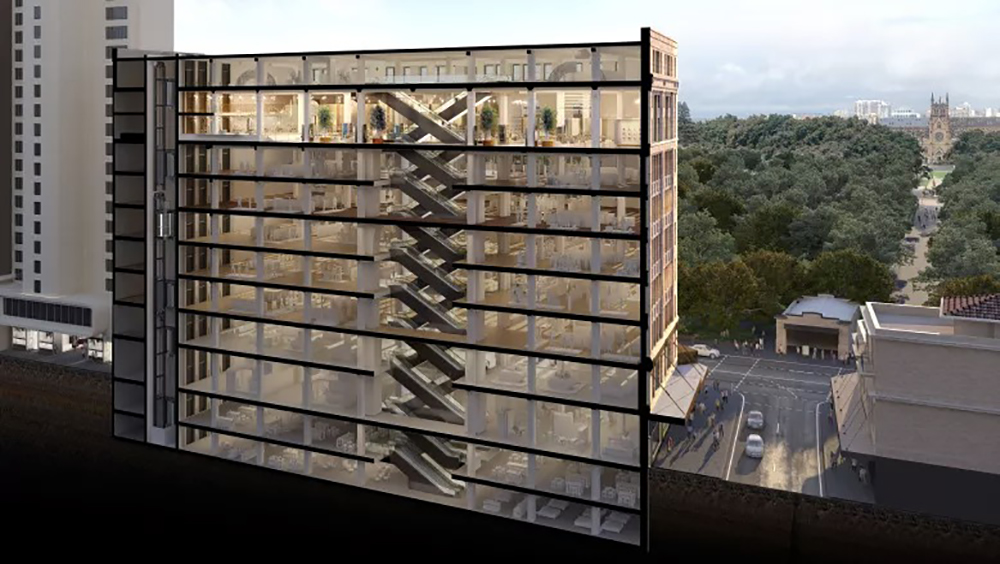Flexibility and interaction driving the future of retail design

When David Jones announced a $200 million overhaul of its flagship Sydney store earlier this year, it was with a singular aim in mind: to create a curated customer experience in a changing retail landscape.
The renovations will see the seven-storey Elizabeth Street premises transformed into six key “worlds”, incorporating a swanky champagne bar, children’s world and shoe heaven.
In undertaking the refurbishment, the retailer will be looking to incorporate some of the key design trends emerging in retail.
Here’s an insight into what’s driving their investment, and why it’s indicative of the future of retail design.
The David Jones factor
Announcing the Sydney store makeover, David Jones chief executive David Thomas told the Australian Financial Review the 180-year old retailer had a once-in-a-generation opportunity to create a world-class shopping destination by bringing the best brands and experiences together in one store across six key “worlds”.
“We’re creating something that certainly Sydney has never seen and indeed Australia has never seen,” Mr Thomas said.
“Retail across the world has been massively disrupted by online and digital, customers are more informed and have more choice than they have ever had – that’s not going away.”
“But the physical and tangible experience of a true flagship store is fundamentally important for our business and fundamentally important to shape the customers’ view of us as a brand.
“Our role in society is to essentially shape the style of this nation – we can edit and curate the best product from around the world, the best local brands and the best international brands – it’s a role that not many retail businesses can have.”
David Jones may be the first of its Australian kind, but the design principles behind it reflect the trends emerging in retail, with The Retail Eye noting these encompass a series of key areas that extend from convenience, to interaction and storytelling.
Convenience
Time is a commodity that consumers actively seek, and retailers who cater to customer convenience stand to benefit from increased patronage.
Retail Eye explains: “Consumers have learned from their internet shopping about saving time. Time is the new currency for the busy consumer. These retailers make their customers’ lives easier, simpler, and more efficient without compromising the quality of products or the shopping experience”.
Key elements of convenience-focussed store design include:
- Clear product display
- Vending-like access to items
- Easy payments, including self-checkout
- Clear signage and pointers
Interaction
Evolving technology means the retail experience has the opportunity to be more personalised and interactive, offering an experience rather than just available products.
This trend taps into bricks and mortar retail’s ability to allow consumers to touch, feel and explore their products, often in scenarios that resemble their own lives.
Retail Eye explains: “Retailers are making this a reality by providing opportunities to socialise with other like-minded shoppers or to interact with knowledgeable and engaging employees. Done well, this interaction builds customer loyalty and strong relationships for the retailer”.
Key elements of the interactive retail design include:
- Smart fitting rooms
- Information kiosks
- Store apps
- Beacons
- Products to test and try
Storytelling
The brand story is becoming increasingly important in retail and extends through every touchpoint from websites to apps and store design.
“Being a retailer or a brand is more than selling products or services, it’s about creating identification and connections. Consumers who identify with a brand tend to commit to it more strongly. These stores encourage their customers to embark on a journey of discovery that is driven by passion for the brand,” Retail Eye explains.
Design elements that reflect the brand story include:
- Shopfittings and fixtures that reflect the ethos of the brand
- Displays that visually tell a story
- A store layout that incorporates the brand history
Flexible spaces
Meanwhile, the changing expectations of the consumer and the need to keep their interest piqued means design and space needs to be more flexible than ever before, notes Décor Design.
In their article on current retail trends, they reflect: “A fast-changing technology and consumer environment is driving the need for retailers to create flexible store concepts and evolve to new formats such as pop-up stores and design flexible and versatile retail spaces that can be changed on a regular basis, whether through design, visual merchandising or product display”.
“A flexible store design also enables retailers to create multi-functional spaces, where shopping areas can be mixed with bars, cafes and event spaces. These destination-type stores offer customers another reason to visit, encourage browsing and ultimately generate customer engagement.”
Security in a décor driven age
Weighing against the beauty and aesthetic appeal of the modern, flexible storefront is the need to secure and protect valuable products on the floor. And like the ever-changing shopfront, retail security is also evolving.
Now EAS systems are more discrete and user-friendly than ever before. Antenna can be built into door frames, housed overhead or even beneath the floor allowing shoppers unimpeded access to the bold customer experience of the new retail world.
Tags are available to suit any item or occasion, offering customers the chance to interact with items on the floor.
Lockable glass cabinets can be readily opened using a single smart key programmed for each staff member, while visually appealing electronics displays featuring tablet enclosures and secure phone docks allow the customer to try, feel and test items before they buy.
The upshot is, the retail environment is changing, but the security it requires is also evolving to meet its interactive, convenient, storytelling, and flexible needs.